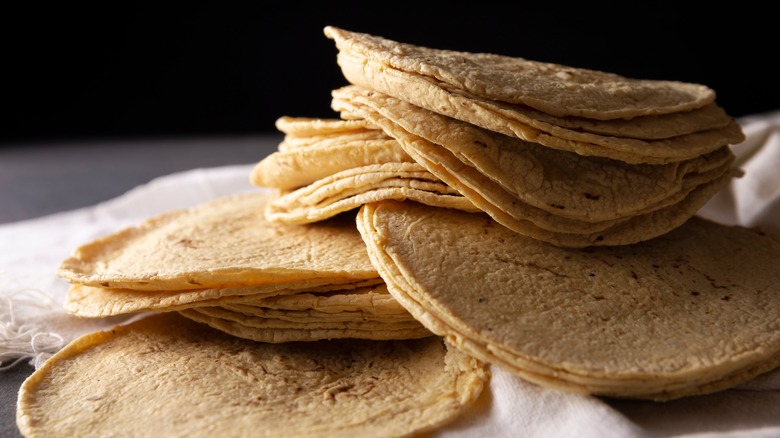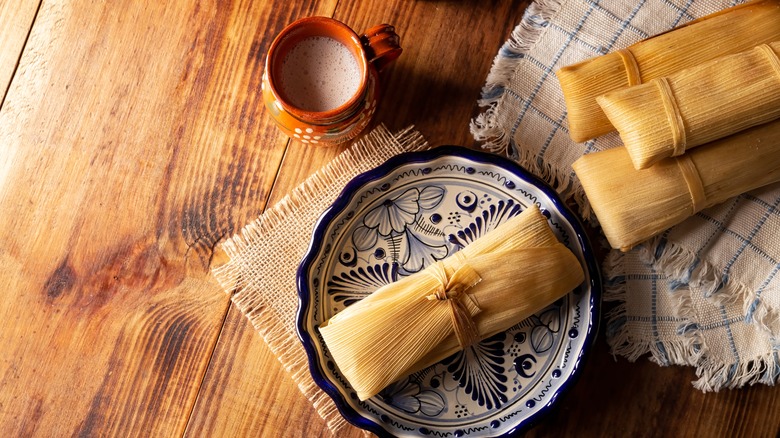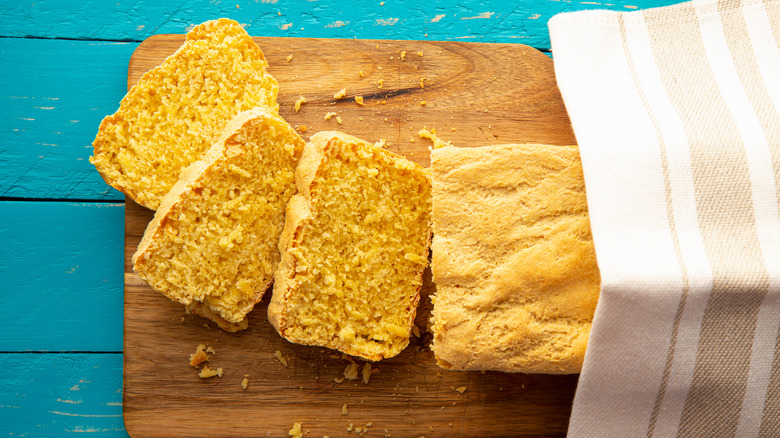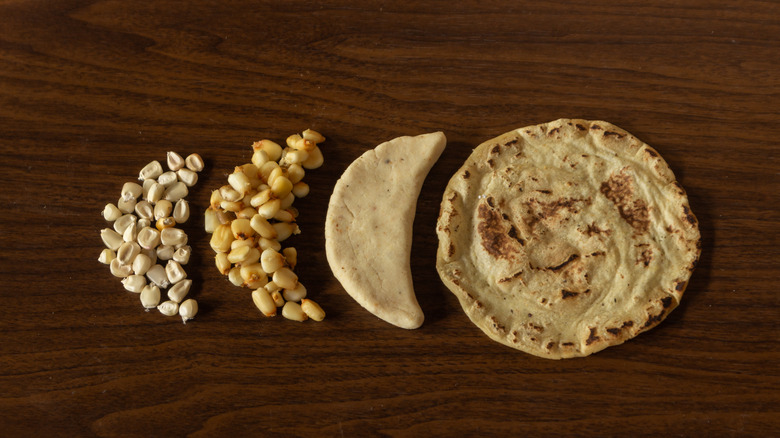Masa Harina Vs. Corn Flour: What's The Difference?
If you've ever had the pleasure of biting into a freshly-pressed, warm corn tortilla made from scratch, you understand there are many different manifestations of this seemingly simple Mesoamerican food. Often serving as a plate or utensil, tortillas were enjoyed by ancient Mayan and Aztec cultures thousands of years ago (via What's Cooking America). Through a journey to the supermarket, one will see many different kinds of ground corn, including polenta, grits, masa harina, and corn flour. So when it comes to traditional corn tortillas, what's the difference between masa harina and corn flour, and how do you make an authentic tortilla?
While you'd be right in guessing that corn tortillas are made from corn flour, there are some significant contrasts between masa harina and corn flour that provide nutritional and textural differences, as well as flavor variance. For example, as MasterClass shares, corn flour is a powdered ingredient made from ground, dried corn kernels, typically using metal rollers or stone. Meanwhile, masa harina is dried corn dough, ground after the process of nixtamalization (via MasterClass), and is considered the more nutritious of the two methods thanks to this extra step.
Whether you are more familiar with masa harina or corn flour, many agree that the fresher the ground corn, the bolder and better the flavor will be (via Epicurious).
How to use masa harina
Because masa harina is essentially a cooked, nixtamalized, dehydrated, powdered corn dough, rather than a simple flour made from dried corn kernels (i.e. corn flour), it can be used as a base for all sorts of dishes — from tamales to tortillas (via How Stuff Works). Essentially, all a home cook needs to add to masa harina in order to create a versatile and tasty corn tortilla is water and a pinch of salt, and the flavor of their masa harina will shine. For perspective, swapping masa harina with corn flour would likely result in a less flavorful or texturally-pleasing tortilla, per MasterClass.
Once you have your delicious and nutritious masa harina corn base, you can make a wide array of different traditional Mexican dishes, including empanadas, coricos, soup dumplings called chochoyotes, and even sweet applications like cornbreads or cookies (via King Arthur Flour). Masa harina, or "dough flour" in Spanish (via How Stuff Works), is celebrated for its relatively complex flavor.
How to use corn flour
While corn flour still offers up vaguely sweet, "corny" notes, most people agree that masa harina offers a little more depth of flavor. Corn flour is more frequently associated with baking projects than it is tortilla production, as it has different virtues than masa. For example, corn flour can be used to make confections like cornbread, biscuits, pancakes or galettes, cake, corndogs, crepes, and even pudding. Corn flour can even be used to thicken soups, offering a relatively sweet and mild flavor that often goes undetected (via BBC Good Food).
Corn flour is a naturally gluten-free flour that can be used in lieu of regular wheat flour, particularly when combined with other types of flour to simulate the behavior of wheat gluten. However, as Beyond Celiac explains, "It is possible for cross-contact to occur during the manufacturing process." It is a less-nutritious, less-flavorful version of masa harina, which can cost anywhere from roughly $2 to $12 for a 2 pound bag (via Walmart and Masienda, respectively). In contrast, corn flour typically costs between $6 and $9 for two pounds (via Zifiti and Walmart, respectively). Both kinds of powdered corn products can come in an array of different certifications (such as Non-GMO) and different varietals of corn (via Masienda and Fruition Seeds).
Can masa harina and corn flour be used interchangeably?
While these products can both be described as different versions of pulverized corn, they are treated to quite disparate production processes and offer different nutritional benefits. As such, a recipe that calls for masa harina may turn out quite lackluster in both flavor and health benefits if substituted with simple, dried corn flour (via MasterClass).
This is because Indigenous cultures native to modern-day Central America and Mexico discovered that, by treating their corn to the nixtamalization process before grinding it, they not only unlocked a deeper, more vibrant corn flavor but also opened up the bioavailability of key nutrients like minerals and proteins inherent in the corn (via MasterClass). Corn prepared in this way offers nutritional benefits like calcium, niacin, fiber, and magnesium (via Masienda). But what is nixtamalization, and how does it work?
Traditional nixtamalization involves cooking and soaking harvested corn kernels in an alkaline, water-based solution, typically a combination of fresh water and the food-safe mineral calcium hydroxide, also known as slaked lime, per International Maize and Wheat Improvement Center (CIMMYT). Once cooked, the kernels typically soak for up to 12 hours before being rinsed (to remove the tough outer husk known as a pericarp) and ground into masa flour (via Masienda). This flour can be mixed with water to create tortillas for tacos, tostadas, sopes, tamales, and even be used as a thickening agent for your favorite chili recipe, which is perhaps why Masienda considers it a superfood.



